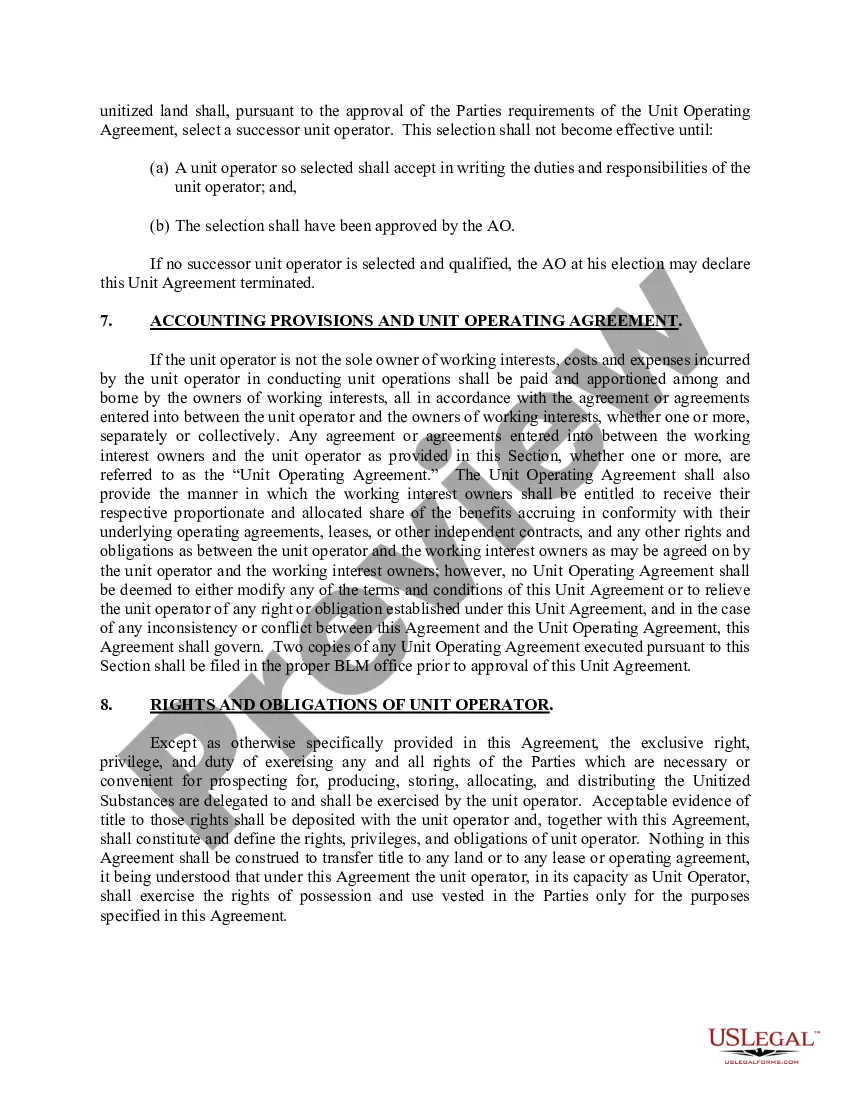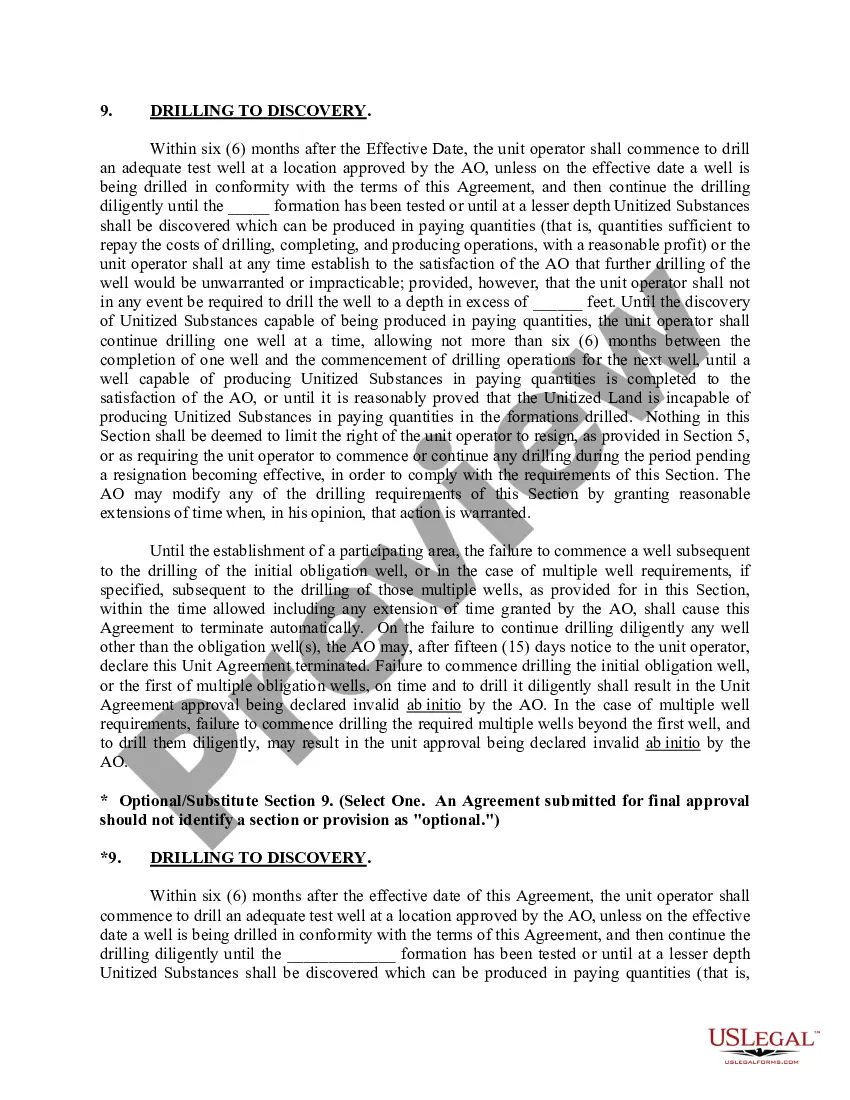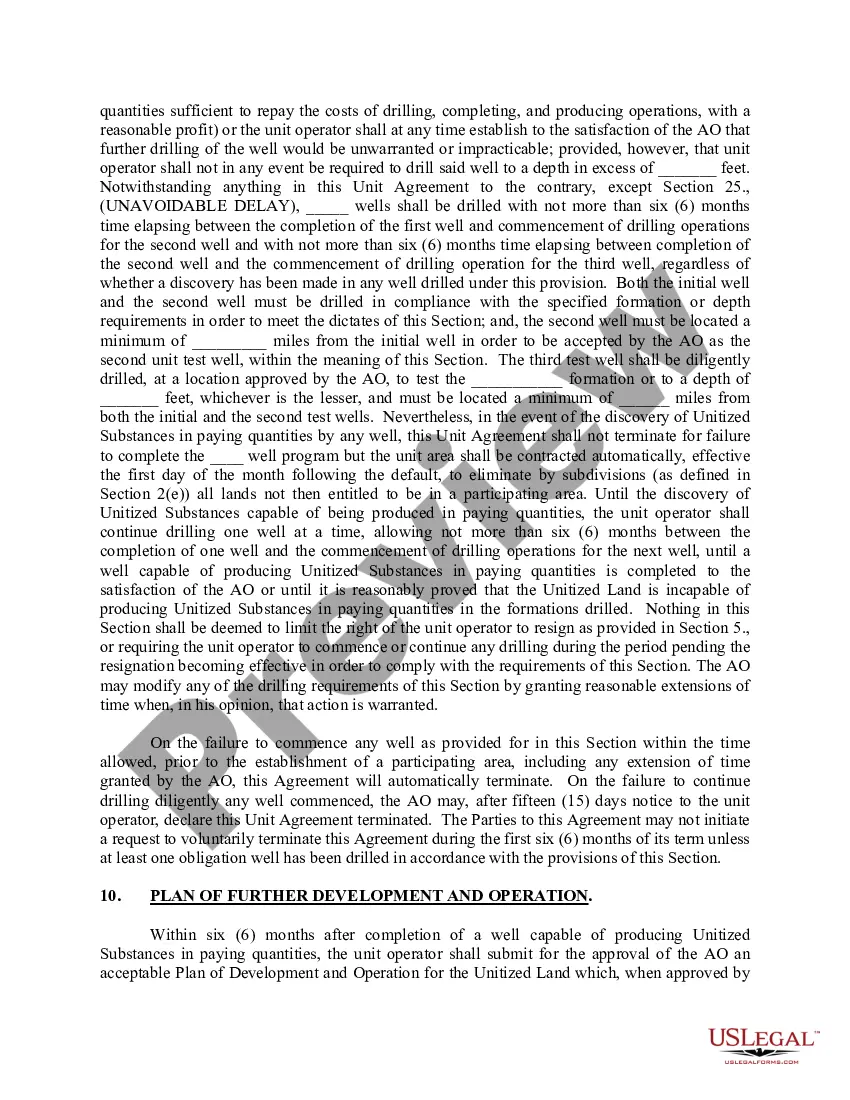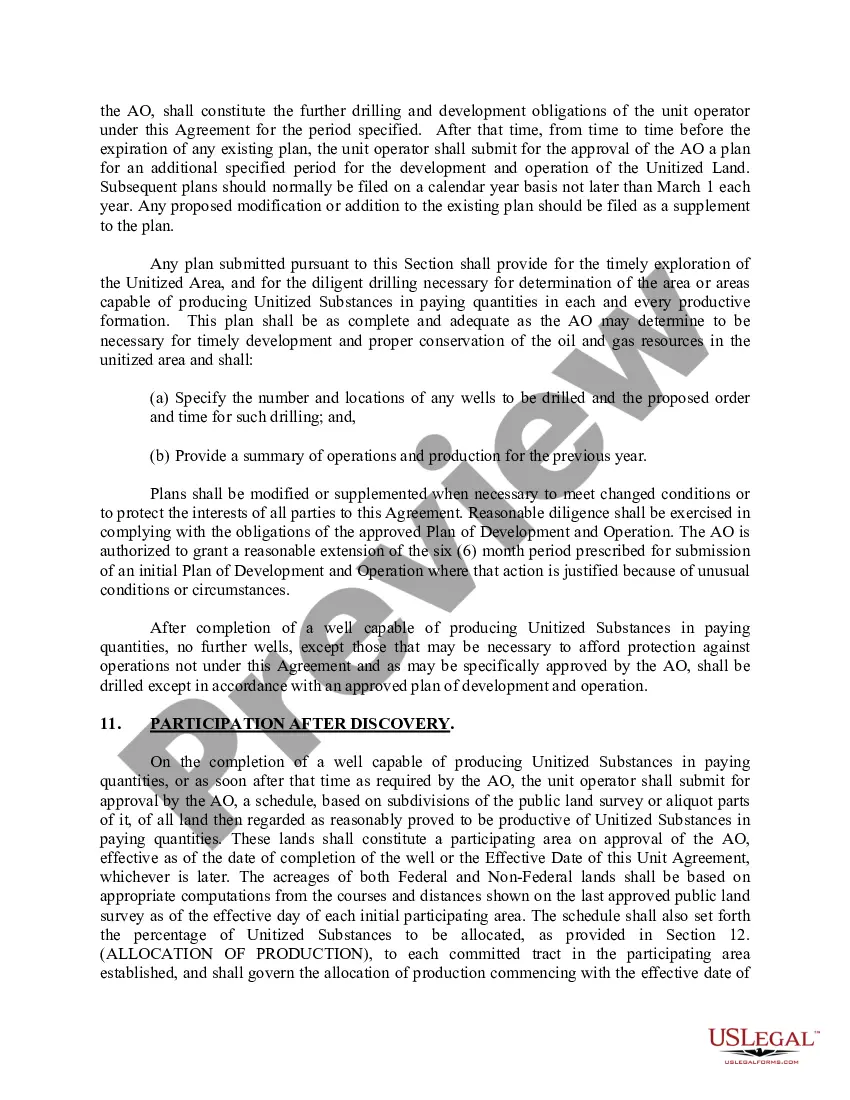This form is an agreement that is used by the Parties that are the owners of working, royalty, or other oil and gas interests in the unit area subject to this Agreement. It is pursuant to the Mineral Leasing Act of February 25, 1920, as amended, 30 U.S.C. Sec. 181 et seq., authorizes Federal lessees and their representatives to unite with each other, or jointly or separately with others, in collectively adopting and operating under a unit plan of development or operations of all or any part of any oil and gas pool, field, or like area, for the purpose of more properly conserving the natural resources whenever determined and certified by the Secretary of the Interior to be necessary or advisable in the public interest.
The Oregon Exploratory Unit Agreement is a legal and contractual arrangement between the state of Oregon and oil and gas companies for the exploration and extraction of fossil fuels within specific geographic areas. It outlines the terms and conditions under which the companies are allowed to explore and exploit the state's natural resources. This agreement enables oil and gas companies to evaluate the potential of underground rocks and formations to determine the presence and viability of commercially recoverable oil and gas reserves. It provides them with the exclusive right to explore and conduct drilling activities within the defined unit, subject to adherence to specific regulations and environmental standards. There are different types of Oregon Exploratory Unit Agreements based on the specific purpose and area of exploration. Here are some notable types: 1. Conventional Exploratory Unit Agreement: This type of agreement pertains to the exploration and extraction of conventional oil and gas reserves that are typically found in traditional reservoirs. It involves drilling vertical wells and employing conventional extraction techniques. 2. Unconventional Exploratory Unit Agreement: This agreement focuses on the exploration and production of unconventional fossil fuels such as shale oil and gas or coaled methane. Unconventional resources require advanced drilling and extraction techniques like hydraulic fracturing (fracking) or horizontal drilling. 3. Offshore Exploratory Unit Agreement: This variation of the agreement applies to exploration and production activities conducted in Oregon's offshore areas, typically in the Pacific Ocean. Offshore exploration involves setting up drilling platforms and specialized equipment to access oil and gas deposits beneath the seabed. 4. Environmental Safeguards Exploratory Unit Agreement: This kind of agreement emphasizes the inclusion of stricter environmental regulations and safeguards to minimize the potential ecological impact of oil and gas exploration activities. It focuses on enforcing sustainability practices, protecting wildlife, and addressing climate change concerns. The Oregon Exploratory Unit Agreement plays a crucial role in balancing economic development, energy production, and environmental conservation. It provides a framework for collaboration between the state authorities and oil and gas companies to ensure responsible exploration and exploitation of natural resources while safeguarding ecological integrity.The Oregon Exploratory Unit Agreement is a legal and contractual arrangement between the state of Oregon and oil and gas companies for the exploration and extraction of fossil fuels within specific geographic areas. It outlines the terms and conditions under which the companies are allowed to explore and exploit the state's natural resources. This agreement enables oil and gas companies to evaluate the potential of underground rocks and formations to determine the presence and viability of commercially recoverable oil and gas reserves. It provides them with the exclusive right to explore and conduct drilling activities within the defined unit, subject to adherence to specific regulations and environmental standards. There are different types of Oregon Exploratory Unit Agreements based on the specific purpose and area of exploration. Here are some notable types: 1. Conventional Exploratory Unit Agreement: This type of agreement pertains to the exploration and extraction of conventional oil and gas reserves that are typically found in traditional reservoirs. It involves drilling vertical wells and employing conventional extraction techniques. 2. Unconventional Exploratory Unit Agreement: This agreement focuses on the exploration and production of unconventional fossil fuels such as shale oil and gas or coaled methane. Unconventional resources require advanced drilling and extraction techniques like hydraulic fracturing (fracking) or horizontal drilling. 3. Offshore Exploratory Unit Agreement: This variation of the agreement applies to exploration and production activities conducted in Oregon's offshore areas, typically in the Pacific Ocean. Offshore exploration involves setting up drilling platforms and specialized equipment to access oil and gas deposits beneath the seabed. 4. Environmental Safeguards Exploratory Unit Agreement: This kind of agreement emphasizes the inclusion of stricter environmental regulations and safeguards to minimize the potential ecological impact of oil and gas exploration activities. It focuses on enforcing sustainability practices, protecting wildlife, and addressing climate change concerns. The Oregon Exploratory Unit Agreement plays a crucial role in balancing economic development, energy production, and environmental conservation. It provides a framework for collaboration between the state authorities and oil and gas companies to ensure responsible exploration and exploitation of natural resources while safeguarding ecological integrity.











